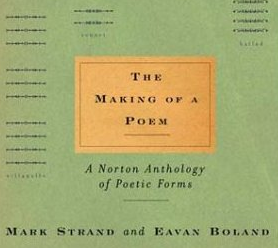About to go off to Edinburgh for 2 day meeting of the Branded Meeting Places project in
Doing quick check on my outbox for 1/2 written emails that I need to finish … and then found the following from July 2006
spring flowers in the meadow
gold sunshine glinting
the grass between lies
cool and smoothgold sunshine glinting
across the rippling waters
cool and smooth
towards the lonely isleacross the rippling waters
birds fly gently
towards the lonely isle
majestic but desolatebirds fly gently
spring long past
majestic but desolate
the snow buried grass
 I recall the context now. I has been reading “The Making of a Poem” a lovely book, that discusses different poetic forms both history and current use and with loads of examples of each, classic and modern. I was talking to Masitah about the pantoum, a Malay poetic form where the 2nd and 4th line of each verse become the 1st and 3rd line of the next verse. I constructed the above as an example as we chatted! I had typed it into an email to save it and there it has lain, forgotten, ever since.
I recall the context now. I has been reading “The Making of a Poem” a lovely book, that discusses different poetic forms both history and current use and with loads of examples of each, classic and modern. I was talking to Masitah about the pantoum, a Malay poetic form where the 2nd and 4th line of each verse become the 1st and 3rd line of the next verse. I constructed the above as an example as we chatted! I had typed it into an email to save it and there it has lain, forgotten, ever since.
I think traditional pantoums have a particular rhythm structure within each verse, so my attempt above has the right line structure structure, but not the right metre. However, I did like the way it created an apparent continuity, yet the meaning could shift underneath – in this case from spring to winter.
My favourite in the book was a modern pantoum by J. M. McClatchy. He repeats the sound of the lines … but not necessarily the words … so in the first verse, the second line is “Seem to pee more often, eat” and in the beginning of the second verse this becomes “Sympathy, more often than not“. Or in the middle “The hearth’s easy, embered expense” becomes “The heart’s lazy: remembrance spent“.
Now back to looking for those urgent mails before the train!
Haliyana pointed out that the Malay word for this is pantun … I then realised I’d spelt the English form of the name wrong … fixed now! “The Making of a Poem” says that the form came to English through French in the 19th century and was called “malais pantun”. Haliyana also sent me the Wikipedia entry for pantun: http://en.wikipedia.org/wiki/Pantun